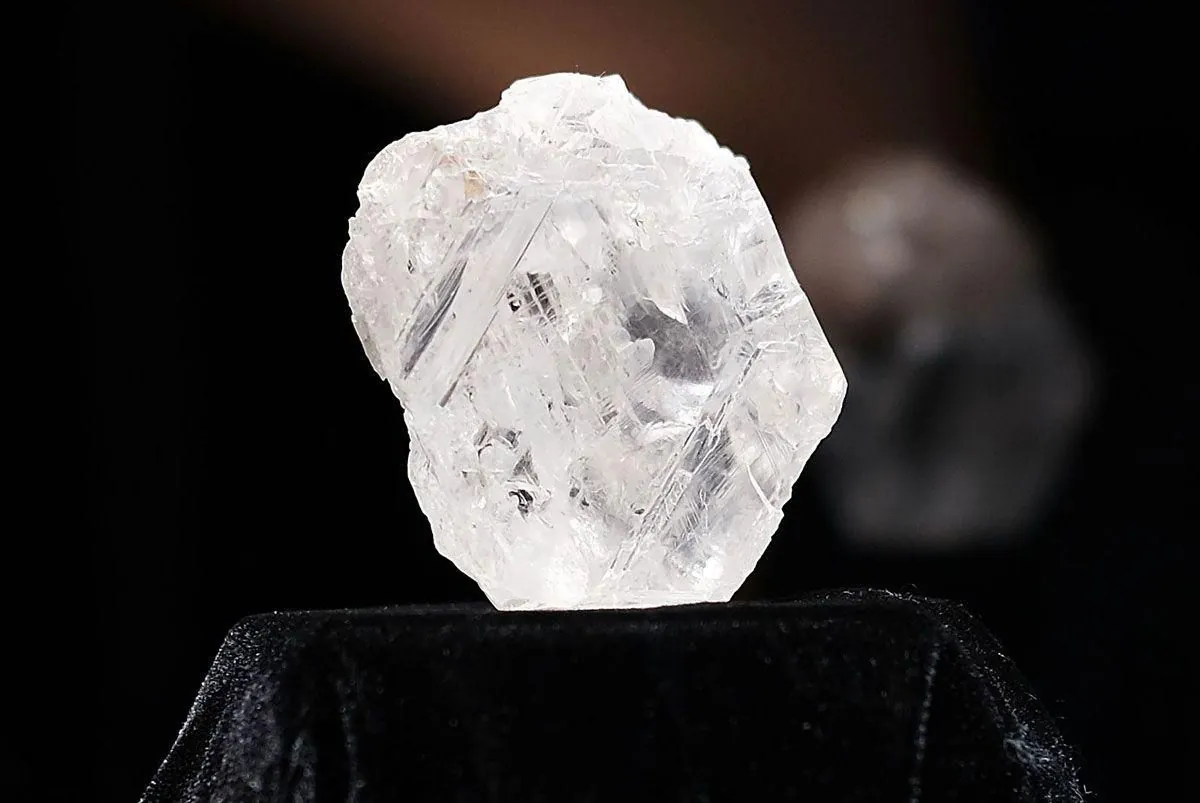In a remarkable discovery, a 2,492-carat diamond has been unearthed in Botswana, marking a significant milestone in the country's mining history. This exceptional gemstone is now recognized as the second-largest diamond ever found globally and the largest ever recovered in Botswana.
The Canadian mining company Lucara Diamond announced this extraordinary find on August 21, 2024. The company's president and CEO, William Lamb, expressed elation over the discovery, attributing it to the advanced X-ray technology employed at their Karowe mine since 2017.
Botswana, the world's second-largest diamond producer by value, has long been a significant player in the global diamond industry. This latest discovery further cements its position and highlights the country's mineral wealth. Diamond mining accounts for approximately 25% of Botswana's GDP, contributing significantly to its status as one of the countries with the highest GDP per capita in Africa.
The Botswanan government has described the gemstone as "precious" and plans to hold a viewing ceremony on August 23, 2024. This event will showcase the country's continued prominence in diamond production and its ability to yield exceptional stones.
To put this discovery into perspective, it's worth comparing it to the world's largest diamond, the Cullinan, which was found in South Africa in 1905. Weighing 3,106 carats, the Cullinan was eventually divided into nine larger gems and nearly 100 smaller ones. Some of these gems now form part of the British crown jewels, including the famous Cullinan I, also known as the "Great Star of Africa."
The Cullinan I, weighing 530.2 carats, is mounted on the Sovereign's Sceptre with Cross, which was used in the coronation of King Charles III in 2023. However, the presence of these diamonds in the British royal regalia has sparked controversy, with calls for their return to South Africa intensifying in recent years.
Botswana's diamond industry has been a cornerstone of its economy since independence in 1966. The country has managed to avoid the "resource curse" that has plagued many other resource-rich nations, instead using its diamond wealth to invest in education and healthcare. This approach has earned Botswana recognition as a model for responsible resource management in Africa.
The Karowe mine, where this latest diamond was discovered, has a history of yielding exceptionally large stones. In 2019, it produced the 1,758-carat Sewelo diamond, which was subsequently purchased by the French fashion house Louis Vuitton. Another notable find was the 1,111-carat Lesedi La Rona diamond in 2015, which was sold to a British jeweler for $53 million two years later.
Botswana's diamond deposits, formed over 3 billion years ago, are subject to strict environmental regulations. The country is also a member of the Kimberley Process, an initiative aimed at preventing the trade of conflict diamonds.
In a move that could reshape the country's mining landscape, Botswana proposed a new law in July 2024. This legislation would require mining companies to sell a 24% stake in their operations to local investors, unless the government opts to acquire the shareholding. This proposal underscores Botswana's commitment to ensuring that its mineral wealth benefits its citizens directly.
As Botswana continues to make headlines with remarkable diamond discoveries, it remains a shining example of how natural resources can be harnessed for national development when managed responsibly.
"We are ecstatic about the discovery of this extraordinary stone. It represents the unparalleled wealth found in Botswana's soil and symbolizes the country's continued ascent as a global leader in diamond production."
This latest find not only showcases Botswana's mineral riches but also highlights the ongoing technological advancements in the mining sector. As the world watches with interest, Botswana's diamond industry continues to sparkle, promising more remarkable discoveries in the future.
